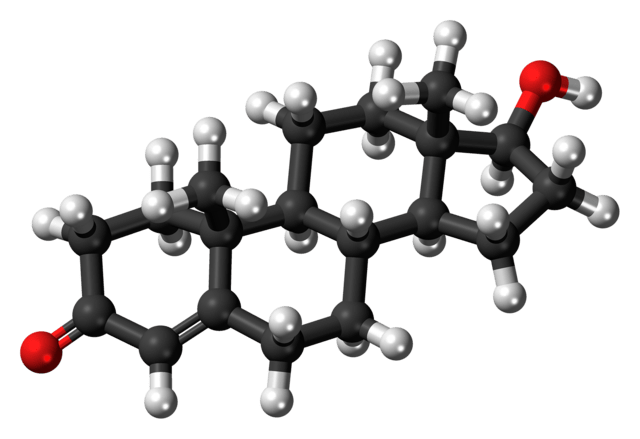Testosterone is produced by Leydig cells. Leydig cells are one of the cells in Testes. Leydig cells, also known as interstitial cells of Leydig, are found adjacent to the seminiferous tubules in the testicle. They produce this hormone in the presence of luteinizing hormone (LH). Blood vessels carry this hormone. Males have 7x to 8x more than the female. This hormone binds to gene.
Functions of Testosterone
It creates reproductive organs for male. It signals sperm production to other parts of the body at the age of 12 or 13. This hormone is responsible for secondary sex characteristics (Facial Hair, Armpit Hair, Pubic Hair, Hair on arms and legs, chests). It is also responsible for deepening of your voice(Testosterone induces growth of the voice box(larynx)(Adam Apple)). This hormone is responsible for male pattern fat distribution around the central part of the body. It is also responsible for anabolism. It stimulates anabolism to build muscles. This hormone is responsible for Muscle and Bone Growth(makes bone bigger in diameter and longer, after complete growth stops from further growth). It increases sex drives and in turn causes aggression.
Erythroporetin(EPO).
Testosterone increases number of red blood cells by producing a hormone called Erythroporetin(EPO). It does that by stimulating our kidneys. Erythroporetin causes more blood cell creation.
Dihdryotestosterone (DHT) stimulates prostate cells. Thus increases the risk of prostate cancer. Excess of DHT in the blood promotes Male pattern baldness.On an average, In Male 7% of testosterone will transform DHT and less than 1% will transform to Estrogen. In males Estrogen has a role in maturation of sperms. It has to pair up with testosterone to increase libido(sex drive)
Life Cycle of this Hormone
Hypothalamus will sense the amount of testosterone that’s floating through your blood. If there are not enough hormones, hypothalamus will send a signal to another gland in the brain called Anterior Pituitary and it will send signals to testes to increase their testosterone production
Negative Feedback Loop : Conversely if there are too much testosterone in the blood, Hypothalamus will sense that and it will stop sending signals to the Anterior Pituitary Gland and then the Anterior Pituitary Gland will stop sending signals to the testes. It will decrease the testosterone production. This negative feedback loop is used to control the amount of hormone in the blood.(Testosterone Homeostasis) Homeostatis means to remain constant
